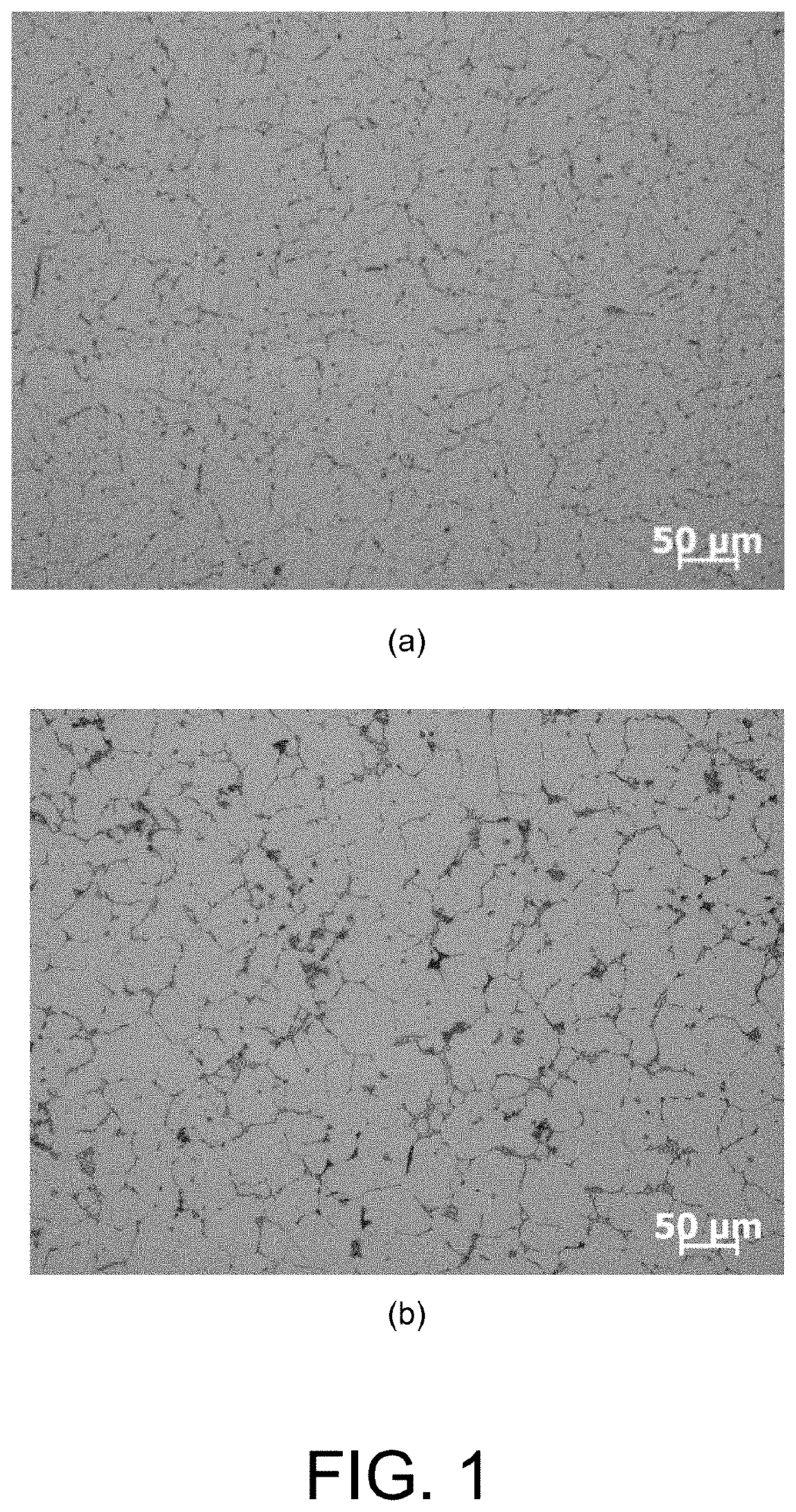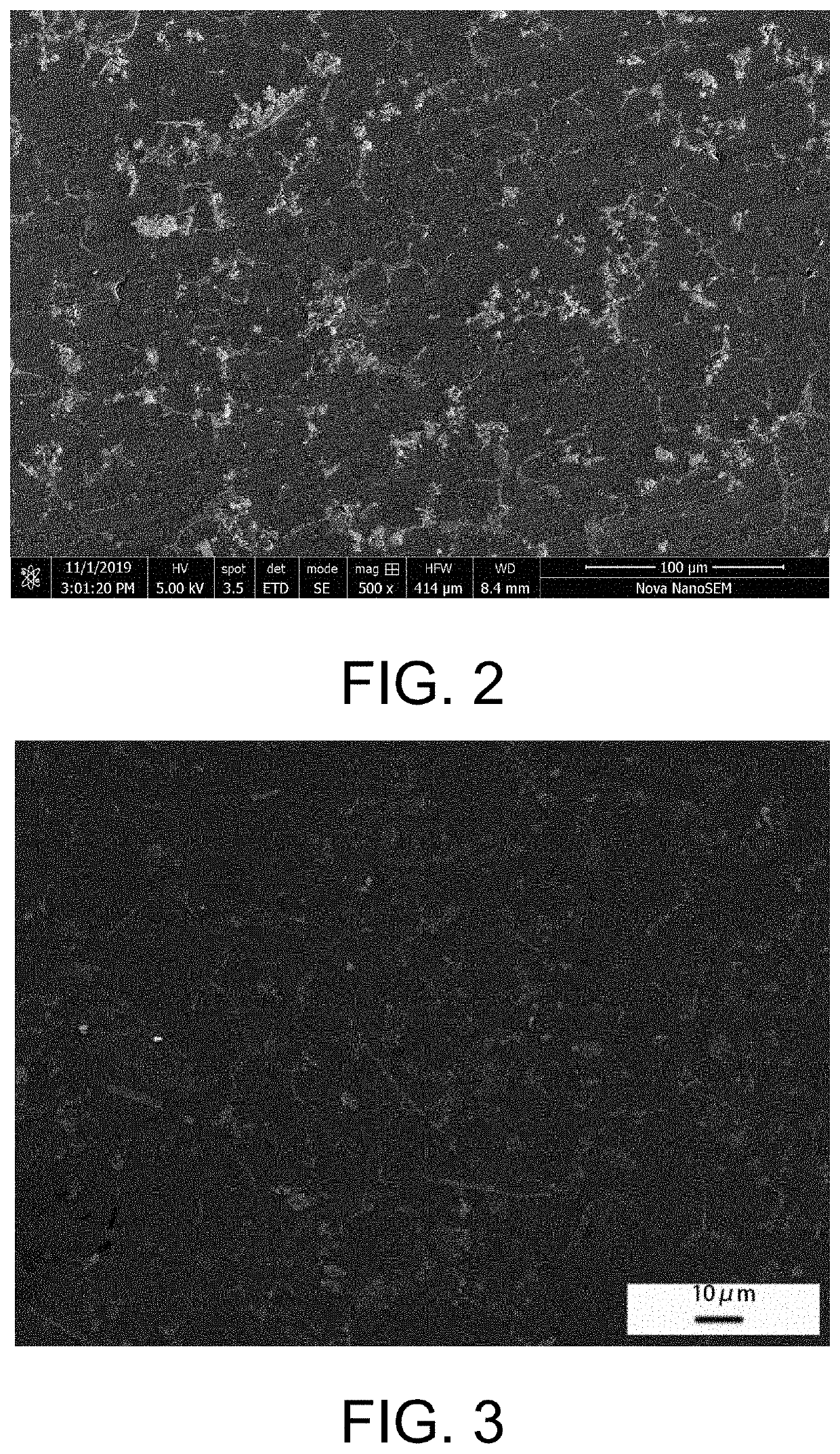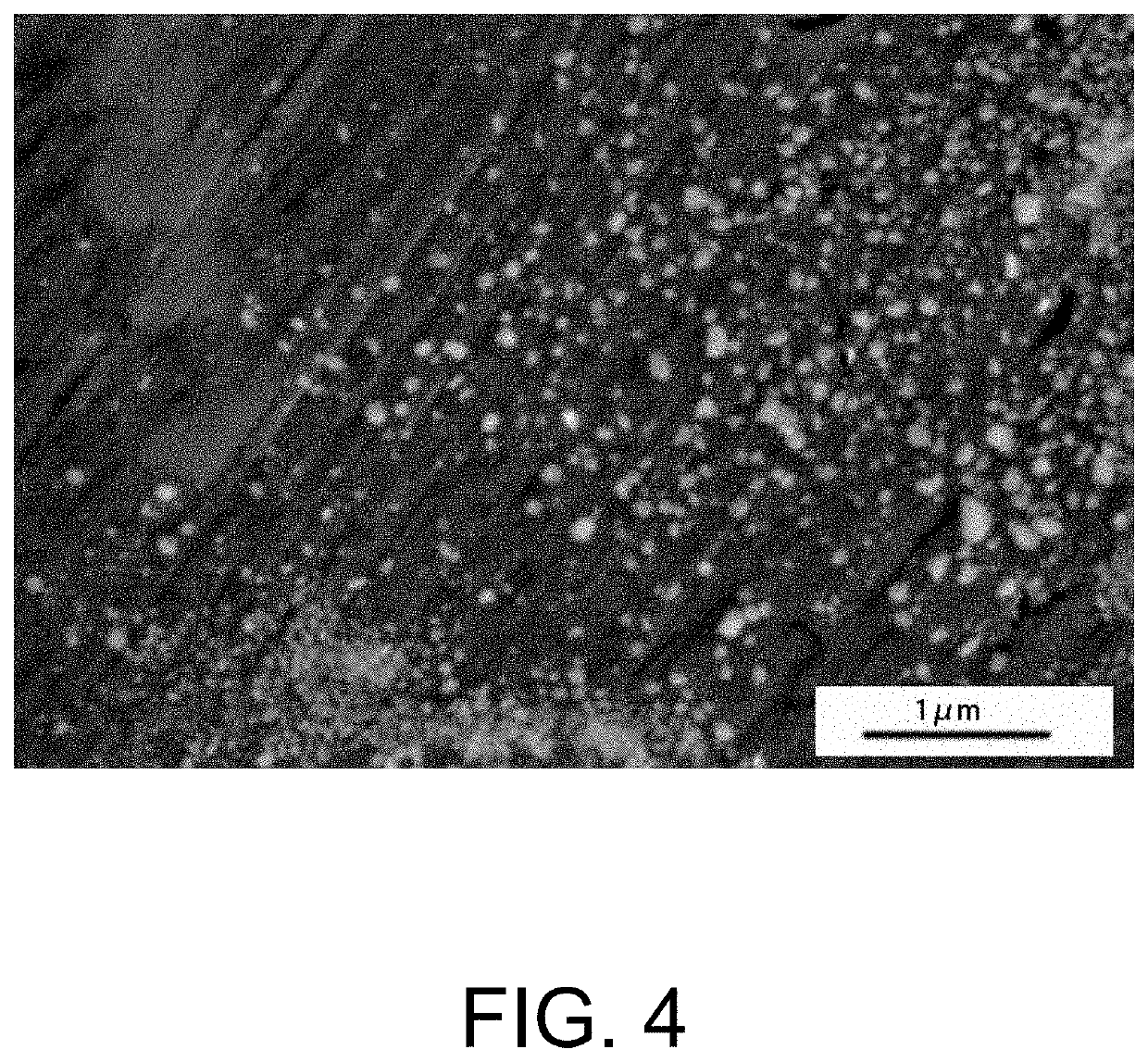Preparation method of in-situ ternary nanoparticle-reinforced aluminum matrix composite
- Summary
- Abstract
- Description
- Claims
- Application Information
AI Technical Summary
Benefits of technology
Problems solved by technology
Method used
Image
Examples
example 1
[0025]Preparation of a 1 vol. % ZrB2+1 vol. % Al2O3+1 wt. % TiB2 nanoparticle-reinforced AMC
[0026]A two-step melt reaction method was adopted. Step 1: Preparation of a 5 wt. % TiB2 particle-reinforced AMC: K2BF6 and K2TiF6 powders were used as reactants, and dried at 200° C. for 120 min in a drying box to remove crystal water. Then the composition design was conducted according to a TiB2 nanoparticle mass fraction of 5%. 254.91 g of dried potassium fluoroborate and 246.10 g of potassium fluorotitanate were weighed, thoroughly mixed, and wrapped with aluminum foil for later use. 886.25 g of industrial pure aluminum was weighed and heated to 850° C. in a high-frequency induction heating furnace, then the mixed reaction salt was pressed into the resulting melt using a graphite bell jar, and an acousto-magneto coupling field was applied at an excitation current of 200 A, a magnetic field frequency of 15 Hz, an ultrasonic power of 1.8 Kw, and an ultrasonic frequency of 20 KHz to allow a ...
example 2
[0029]Preparation of a 2 vol. % ZrB2+2 vol. % Al2O3+2 wt. % TiB2 nanoparticle-reinforced AMC
[0030]A two-step melt reaction method was adopted: Step 1: An AMC with 5 wt. % TiB2 reinforcement particles was prepared, and the composition design was conducted according to a TiB2 nanoparticle mass fraction of 5%. The composite was used as a nanoparticle-containing intermediate alloy. Step 2: Preparation of a (ZrB2+Al2O3) nanoparticle-reinforced AA6111-based composite: The composition design was conducted according to a nanoparticle (ZrB2+Al2O3) volume fraction of 2%. 1,218.64 g of an AA6111 aluminum alloy, 96.31 g of borax (Na2B4O7.10H2O), and 224.89 g of potassium fluorozirconate (K2ZrF6) were weighed. The weighed AA6111 aluminum alloy was heated to 850° C. in a high-frequency induction heating furnace for melting, then the weighed K2ZrF6 and borax were added to the resulting aluminum melt in multiple batches, and after the reaction salt powder was completely added, an acousto-magneto co...
example 3
[0033]Preparation of a 3 vol % ZrB2+3 vol % Al2O3+2 wt % TiB2 nanoparticle-reinforced AMC
[0034]A two-step melt reaction method was adopted. Step 1: An AMC with 5 wt. % TiB2 reinforcement particles was prepared, and the composition design was conducted according to a TiB2 nanoparticle mass fraction of 5%. The composite was used as a nanoparticle-containing intermediate alloy. Step 2: Preparation of a (ZrB2+Al2O3) nanoparticle-reinforced AA6111-based composite: The composition design was conducted according to a nanoparticle (ZrB2+Al2O3) volume fraction of 3%. 1,354.62 g of an AA6111 aluminum alloy, 159.87 g of borax (Na2B4O7.10H2O), and 373.30 g of potassium fluorozirconate (K2ZrF6) were weighed. The weighed AA6111 aluminum alloy was heated to 850° C. in a high-frequency induction heating furnace for melting, then the weighed K2ZrF6 and borax were added to the resulting aluminum melt in multiple batches, and after the reaction salt powder was completely added, an acousto-magneto coup...
PUM
| Property | Measurement | Unit |
|---|---|---|
| Temperature | aaaaa | aaaaa |
| Temperature | aaaaa | aaaaa |
| Temperature | aaaaa | aaaaa |
Abstract
Description
Claims
Application Information
 Login to View More
Login to View More - R&D
- Intellectual Property
- Life Sciences
- Materials
- Tech Scout
- Unparalleled Data Quality
- Higher Quality Content
- 60% Fewer Hallucinations
Browse by: Latest US Patents, China's latest patents, Technical Efficacy Thesaurus, Application Domain, Technology Topic, Popular Technical Reports.
© 2025 PatSnap. All rights reserved.Legal|Privacy policy|Modern Slavery Act Transparency Statement|Sitemap|About US| Contact US: help@patsnap.com



